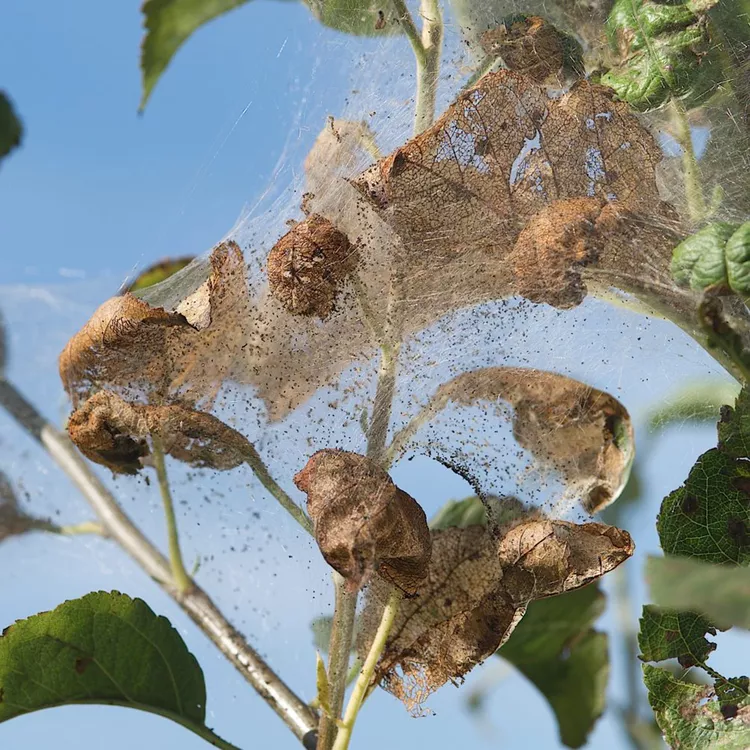If there was a contest for the ugliest pest infestations on trees and shrubs, fall webworms would likely take the prize. These caterpillars spin protective webs or nests around a few leaves on a branch and then proceed to eat all the leaves within the nest. As the caterpillars grow, the nest expands to encapsulate even more leaves. Some nests can reach more than 3 feet across. When several of these web-covered "apartments" cover the branches of your tree or shrub, it's not a pretty sight. But there's good news: plants usually recover well the following year. Still, there are several ways to get rid of webworms in trees and shrubs.
Alder, willow, cottonwood, apple, pear, peach, pecan, walnut, elm, and maples are most susceptible to fall webworms, but these pests are known to make their nests in more than 90 different species. And don't be fooled by their name. Fall webworms often start spinning webs and eating foliage in June. These summer infestations are smaller than the extensive colonies that form in late summer and fall. So if you begin dealing with fall webworms in summer when you first notice them, you'll avoid a more significant infestation in fall.
Strategy 1: Remove the Webs
In small trees and shrubs, the most effective way to get rid of webworms can be physically removing the webbing with a rake, a big stick, or a strong stream of water from your hose. In larger trees, you can prune out the affected branches. Bag the nests and throw them in the trash or toss them on the ground and stomp on them to kill the webworms. Remove the webs as soon as you notice them (often in June or July) to prevent the caterpillars from reproducing and taking over the entire plant.
Even if you can't completely remove the nests, don't worry. Simply damaging them and opening them up is enough to allow birds or beneficial insects to invade and get rid of the pests for you.
Strategy 2: Encourage Beneficial Insects
Many species of insects, including a number of tiny wasps, attack and kill fall webworms for food. Entomologists have found more than 80 predators and parasites that feast on them. Encourage beneficial insects by planting sunflowers and other plants in the daisy family in your yard. Or purchase beneficial wasps from an online supplier.
Strategy 3: Treat Fall Webworms With Bt
A bacterium called Bt infects and kills many species of caterpillars, including fall webworms. Bt won't cause damage to plants, people, or pets. It's most effective if you can break a hole in the webbing to spray it onto the pests. However, Bt will also kill the caterpillars of many butterflies like monarchs, so use it with caution.
Strategy 4: Spray Webworm Nests with Neem
Neem is one of several organic insecticides available. This product is derived from a tropical tree and can be very effective at getting rid of all sorts of insect pests. Like Bt, it won't cause damage to plants, people, or pets. However, while neem is organic, it will kill many beneficial insects like essential pollinators, so spray with care.
Strategy 5: Look the Other Way
Remember that webworms don't typically cause long-term damage to trees and shrubs. The damage looks far worse than it is. The most organic approach is to let the webworms be. Even if they defoliate your plant, it's usually late enough in the season that it doesn't do lasting harm. Chances are, the heavy rains of late fall and snow in winter will knock the webs off the trees. Water the affected plant deeply in the fall to encourage strong root growth going into winter, and you can expect healthy new growth to appear in the spring.

